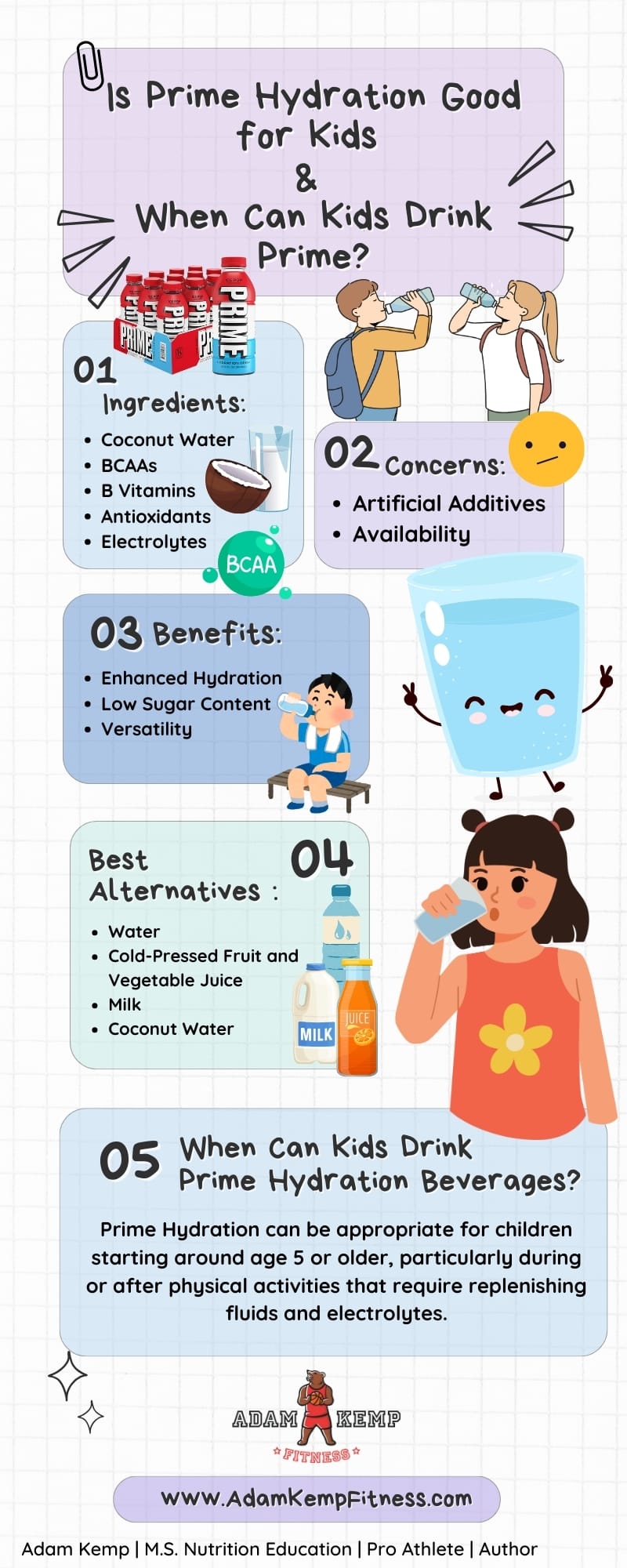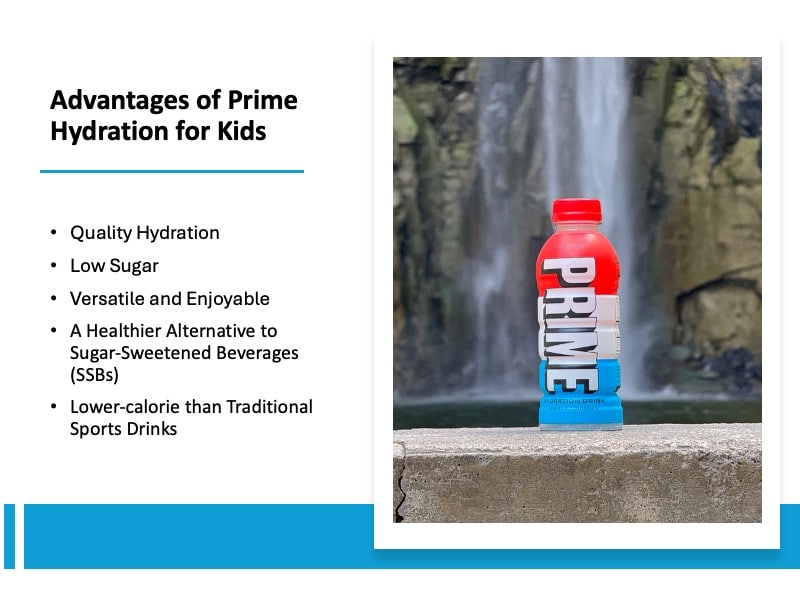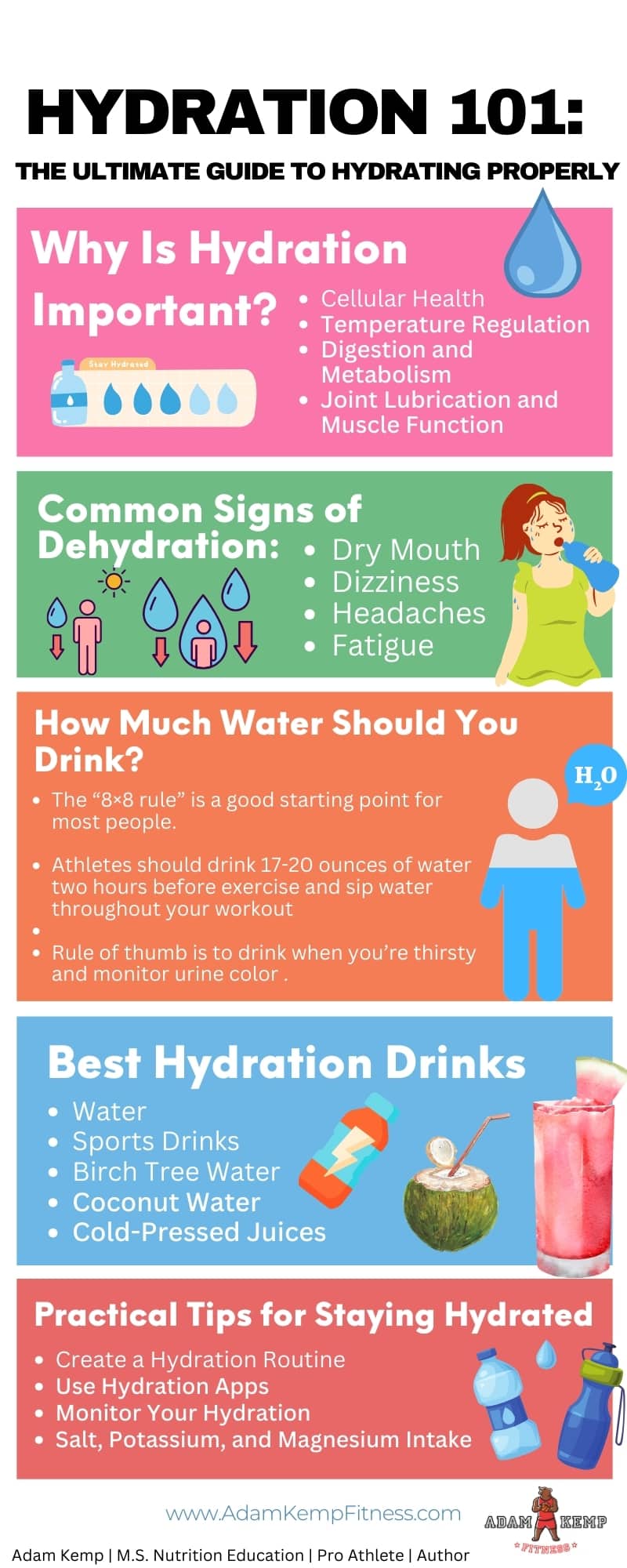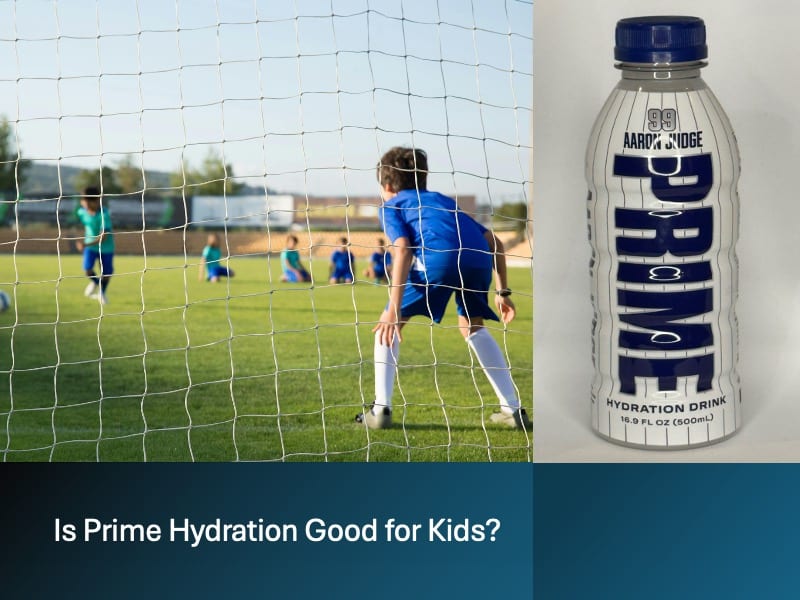Prime Hydration for Kids Review: Is Prime Good for Kids?
“Is Prime good for kids?” As this hydration drink surges in popularity, many parents are wondering whether it’s a smart, healthy choice for growing children—or just another trendy beverage with flashy marketing.
Hydration plays a foundational role in children’s health, affecting everything from energy levels and cognitive function to physical performance and overall well-being.
As a professional basketball player and Nutrition Educator, I’ve studied hydration science in depth—not just for peak athletic performance, but also for long-term health.
I’ve also created hydration-focused education programs for fitness professionals and coaches, equipping them to guide athletes of all ages toward better fluid balance and recovery strategies.
Now, as a father, I look at hydration from a new lens—wondering what’s best for our kids, especially as colorful new drinks like Prime Hydration dominate store shelves.
So, is Prime good for kids? That’s the question more and more parents are asking—and one worth breaking down with clarity and nuance.
This review explores the ingredients, benefits, and potential concerns behind Prime Hydration so you can make the best decision for your child’s health.
We’ll also compare it with other sports drinks and offer smarter hydration alternatives for growing kids.
What are Prime Hydration Drinks?

Prime Hydration is a popular sports drink created by influencers Logan Paul and KSI, designed to offer both hydration and a delicious taste.
It’s formulated with a blend of coconut water, BCAAs, B vitamins, antioxidants, and electrolytes, providing essential nutrients for active lifestyles.
With about 25 calories and 2 grams of sugar per bottle, Prime Hydration stands out as a healthier option compared to many traditional sports drinks. Its low sugar content and range of flavors make it a versatile choice for hydration during or after workouts.
So, is Prime good for kids? Absolutely!
With its minimal sugar and added nutrients, it can be a better alternative to sugary drinks, helping kids stay hydrated without the negative health impacts of high-sugar beverages.
Ingredients
- Coconut Water: Known for its natural electrolyte content, it aids in hydration.
- BCAAs: Branched-Chain Amino Acids help support muscle recovery and reduce fatigue.
- B Vitamins: Essential for energy metabolism and overall health.
- Vitamin A: Essential for maintaining vision, supporting immune function, and promoting healthy skin and cell growth.
- Antioxidants: Help combat oxidative stress and support immune function.
- Electrolytes: Sodium and potassium maintain fluid balance and muscle function.
Concerning Ingredients in Prime
While Prime Hydration offers several benefits, there are a few ingredients that may raise concerns—especially when it comes to children.
Understanding these components is essential for making informed choices about your child’s hydration.
High Vitamin A Content
Prime Hydration contains 900 mcg of Vitamin A per serving, which is the full recommended daily intake for children aged 4-8 years old and close to the upper limit for older children.
Consuming more than one bottle a day increases the risk of Vitamin A toxicity in kids.
If the excess persists, overconsumption can lead to symptoms like headaches, stomach upset, or more severe complications over time.
Sticking to one serving per day ensures kids reap the hydration benefits without exceeding safe Vitamin A levels.
Parents should monitor intake and ensure Prime Hydration complements a balanced diet rather than becoming a primary source of vitamins.
Artificial Additives
Despite its benefits, some flavors may contain artificial colors and flavors, which may not be ideal for children.
Benefits of Prime Hydration for Kids

As I’ve mentioned, Prime Hydration drinks offer a healthier alternative to sugary beverages that both kids and adults can enjoy.
These drinks are especially great for children who love flavored drinks but need to avoid the high sugar content found in many popular options.
With only 2 grams of sugar per serving, Prime Hydration helps keep kids hydrated without the negative effects of sugary drinks, making it a smart addition to their daily routine. Here are some key benefits parents should know:
- Better Hydration: Prime Hydration contains coconut water and electrolytes that replenish fluids lost during play or physical activities, keeping kids properly hydrated.
- Low Sugar: Unlike many sugary beverages, Prime Hydration has a minimal amount of sugar, which supports better health and helps prevent issues like energy crashes or weight gain.
- Versatile and Enjoyable: The drink’s enjoyable flavor and balanced nutrition make it perfect for sports, school lunches, or simply staying hydrated throughout the day.
So, is Prime good for kids? Absolutely—it’s a tasty, low-sugar way to help them stay hydrated and healthy.
A Healthier Alternative to Sugar-Sweetened Beverages (SSBs)
Prime Hydration drinks are as a healthier choice compared to sugar-sweetened beverages (SSBs) like sodas and artificial fruit juices.
Their high water content and minimal sugar levels make them suitable for both children and adults who aim to stay hydrated without the excess sugars commonly found in SSBs.
Unlike Prime Energy drinks, which serve different purposes, Prime Hydration beverages are crafted specifically to replenish fluids and electrolytes.
This focus makes them preferable over full-sugar drinks like Gatorade or Powerade, which are classified as SSBs.
I even found the new Aaron Judge Prime Hydration drink at my local Walmart, which only contains 20 calories per bottle.
By prioritizing hydration and electrolyte balance, these drinks cater to the needs of active individuals, supporting recovery and fluid replenishment after exercise without the drawbacks of typical SSBs.
Lower-Calorie than Traditional Sports Drinks
Traditional sports drinks, often considered SSBs, are high in sugar, leading to unwanted calorie intake and potential health issues.
Prime Hydration is one of the best sports drinks for kids as it offers a lower-calorie alternative, making it a better choice for those looking to maintain hydration levels without the adverse effects of excess sugar found in SSBs.
The inclusion of essential electrolytes aids in effective rehydration, supporting physical activity recovery while minimizing calorie consumption.
When Can Kids Drink Prime Hydration Beverages?
Drinking Prime Hydration is one of the best hydration tips for young athletes and other kids because it offers a better alternative to many sugary beverages marketed to kids, like Gatorade or soda.
With fewer calories and no added sugars, Prime can be a good option for rehydration, and if kids enjoy it, it might even encourage them to drink more water or coconut water over time.
That said, be mindful of coconut water’s potassium content, especially on hot days, as excessive consumption can lead to hyperkalemia.
Prime Hydration can be appropriate for children starting around age 5 or older, particularly during or after physical activities that require replenishing fluids and electrolytes.
At this age, kids may begin participating in more structured sports and physical activities, making an occasional sports drink like Prime Hydration beneficial for maintaining hydration during or after exercise.
However, it’s important to limit consumption to times when additional hydration is necessary, as water should remain the primary drink for daily hydration.
Always consult with a healthcare provider before introducing sports drinks like Prime Hydration into your child’s routine, especially for younger children.
Best Alternatives to Prime Hydration for Kids
While Prime Hydration drinks are a healthier option than many sugary beverages, water is still the best choice for hydration.
Encouraging kids to drink water regularly is key to maintaining proper hydration, and filtering tap water with options like a Brita or Pur filter can improve taste and increase water intake.
Other great alternatives include natural beverages like coconut water, which provides electrolytes without added sugars, and fresh-pressed juices in moderation for a nutrient boost.
For a low-sugar sports hydration drink similar to Prime, Gatorade Fit is a great alternative.
It’s made with mostly natural ingredients, contains no added sugar, and delivers electrolytes to keep kids hydrated, making it a good choice for active children needing replenishment after exercise.

Water
For those with suitable city water, using a Brita or Pur filter can improve taste and encourage more frequent water consumption.
I use a 30-cup Pur Plus Water Filter, which I refill multiple times each day.
Natural sparkling waters with flavorings offer a refreshing, zero-calorie alternative, making them an appealing choice for those who prefer something bubbly.
Cold-Pressed Fruit and Vegetable Juice
Juicing fresh fruits and vegetables once per day is a great way to introduce kids and adults to a variety of tastes and rapidly increase daily vitamin and mineral intake.
These options provide hydration and additional nutrients without the high sugar content in many commercial beverages.
However, I don’t recommend drinking fruit or vegetable juice during or immediately before exercise as it can upset the digestive system.
Coconut Water
Coconut water is an excellent, naturally hydrating beverage that offers a refreshing alternative to sugary sports drinks and juices.
Rich in electrolytes like potassium, magnesium, and calcium, coconut water can help replenish lost fluids and nutrients, especially after physical activity.
However, understanding the pros and cons of coconut water for athletes is essential before relying on it as a primary hydration source during training or competition since the high potassium content can cause issues for endurance athletes or people who sweat a lot.
For kids, coconut water is a great option because it contains fewer calories and sugar compared to most fruit juices and sports drinks.
It also has a mild, slightly sweet taste that many children enjoy, making it an appealing option for those who struggle to drink enough water throughout the day.
One of the key benefits of coconut water is its high potassium content, which supports proper muscle function and hydration balance in the body.
This makes it an excellent choice for active children who need to stay hydrated while avoiding the artificial ingredients found in many sports drinks.
When choosing coconut water for kids, it’s best to opt for varieties that are pure and unsweetened, as some commercial products may include added sugars or flavorings that reduce the natural benefits.
Overall, coconut water provides a healthy, natural way to keep kids hydrated while delivering essential nutrients, making it a smart choice for parents seeking alternatives to sugary beverages.
Final Thoughts: Is Prime Good for Kids?
Is Prime good for kids? In moderation and under the right circumstances, yes—Prime
Hydration can be a healthier alternative to many traditional sugary drinks, especially after physical activity.
Its low sugar content, added electrolytes, and enjoyable flavors make it a practical option for supporting hydration in active children.
However, it’s not an everyday replacement for water.
Parents should monitor intake, particularly because of the Vitamin A content and the potential presence of artificial additives in some flavors.
For most kids, drinking Prime occasionally—especially after sports or extended outdoor play—can be helpful, but water should remain the primary source of daily hydration.
As always, it’s best to consider your child’s individual nutritional needs and consult a pediatrician if you have concerns.
When used thoughtfully, Prime Hydration can support healthy habits—especially if it helps your child choose water and nutrient-rich drinks over sodas and sugary fruit juices.
Frequently Asked Questions
Read Next: Top 10 Health & Fitness Tips for Children



